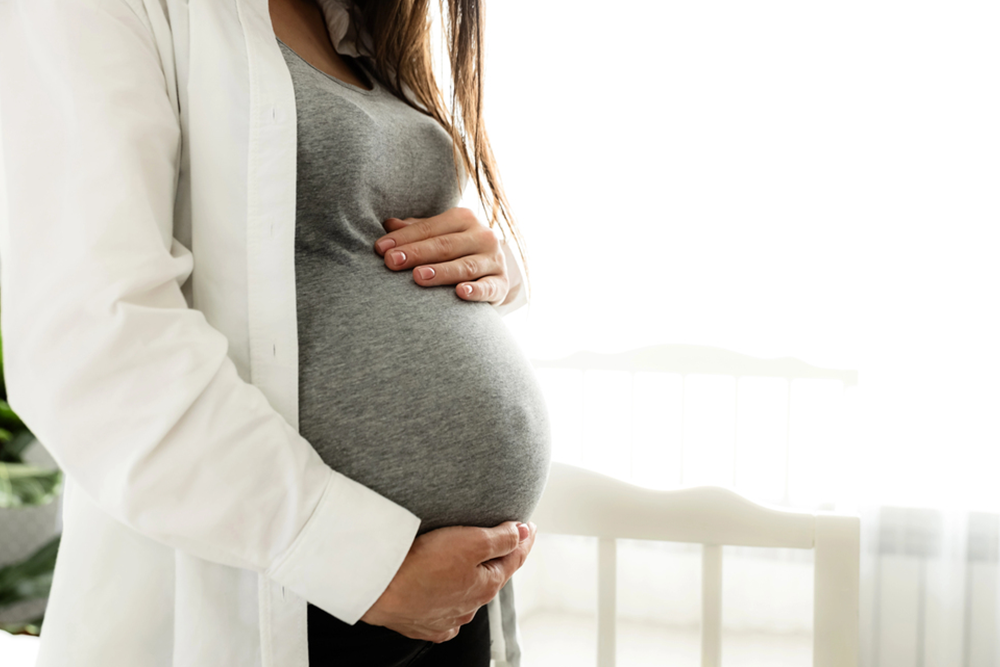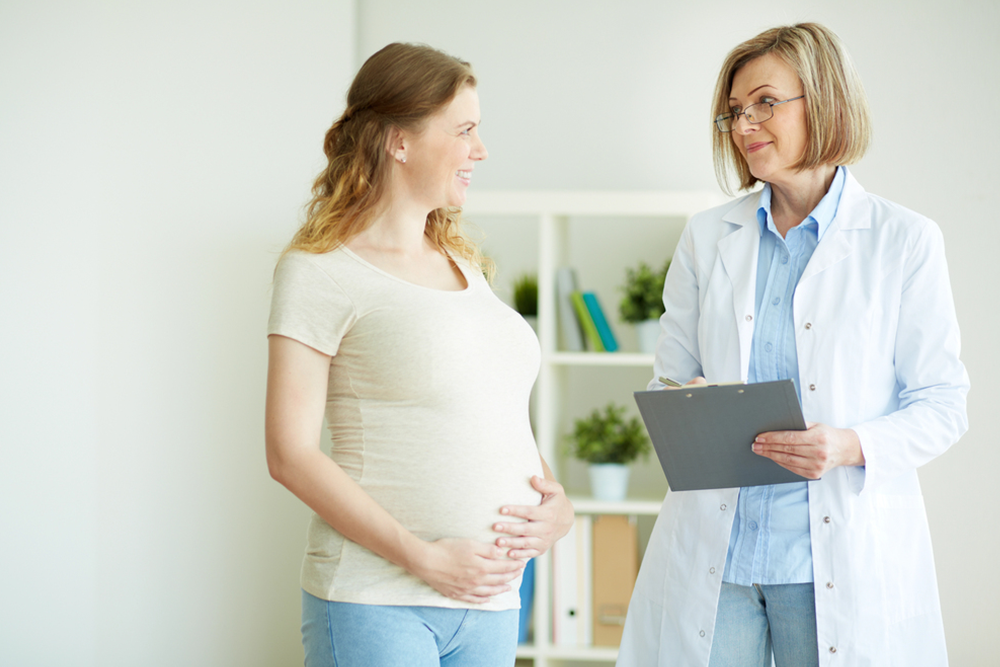What To Do When Dealing With Ovarian Cysts
Published on 04/02/21
Maybe you’ve been diagnosed with ovarian cysts or maybe you’re dealing with a possibility that an ovarian cyst won’t go away. Ovarian cysts can sound scary. So, exactly what are they?
Ovarian cysts are sacs or pockets in or on an ovary that are filled with fluid. Women are born with two ovaries. Each ovary is about the size and shape of an almond located on each side of the uterus. This is where our eggs – ova – develop and mature then release once a month during the childbearing years.
Most ovarian cysts are benign and leave nothing to worry about. Unless you’re dealing with abdominal pain in conjunction, this means you could have a cyst that is in need of checking.
Ovarian cysts can cause serious symptoms, especially if they have ruptured. To help regulate this, getting regular pelvic exams and knowing the symptoms can help you prevent a potentially serious problem.
However, ovarian cysts are normally harmless and develop zero symptoms. If your ovarian cyst won’t go away and you’re feeling painful bowel movements, pain during sex, abdominal pain, and/or swelling, make an appointment to talk to your healthcare provider.
Ovarian Cysts Vs. Follicles
It’s normal for your ovaries to grow cyst-like structures called follicles each month. These follicles produce the hormones estrogen and progesterone which helps release an egg when you ovulate.
If a normal monthly follicle keeps growing, it’s known as a functional cyst. There are two types of functional cysts:
- Follicular cyst: Around the midpoint of your menstrual cycle, an egg bursts out of its follicle and travels down the fallopian tube. A follicular cyst begins when the follicle doesn’t rupture or release its egg but continues to grow.
- Corpus luteum cyst: When a follicle releases its egg, it begins producing estrogen and progesterone for conception. This follicle is now called the corpus luteum. Sometimes, fluid accumulates inside the follicle, causing the corpus luteum to grow into a cyst.
These types of functional cysts are normally harmless and rarely show any signs of symptoms. They tend to disappear on their own within two to three menstrual cycles.
There are other types of cysts not related to the regular functions of your menstrual cycle. Those could be:
- Dermoid cysts: Also called teratomas, these can contain tissue, such as hair, skin, or teeth. Because they form from embryonic cells, they’re rarely cancerous.
- Cystadenomas: These develop on the surface of an ovary and might be filled with a watery or mucous material.
- Endometriomas: These develop as a result of a condition in which uterine endometrial cells grow outside your uterus (endometriosis). Some of the tissue can attach to your ovary and form a growth.
Unlike functional cysts, dermoid cysts and cystadenomas can grow to become too large. At a certain size, they can cause the ovary to move out of position. This can cause painful twisting of your ovary called ovarian torsion. This may cause a decrease in blood flow to the ovary or a stoppage entirely.
Most cysts, no matter the type, develop from the menstrual cycle. These are mainly functional cysts. The other types of cysts are not very common.
Causes of Ovarian Cysts
The most common causes of ovarian cysts include:
- Hormonal problems or medications used to help you ovulate.
- Endometriosis — Women with endometriosis can develop a type of ovarian cyst that can be painful during sex and their period.
- Pregnancy — An ovarian cyst normally develops in early pregnancy to help support the pregnancy until the placenta forms. Sometimes, the cyst stays on the ovary until later in the pregnancy and may need to be removed.
- Severe pelvic infections — Infections can spread to the ovaries and fallopian tubes and cause cysts to form.
Symptoms
Most cysts don’t cause symptoms and go away on their own. However, a large ovarian cyst can cause:
- Pelvic pain — a dull or sharp ache in the lower abdomen on the side of the cyst
- Fullness or heaviness in your abdomen
- Bloating
You should seek medical attention if you start to experience:
- Sudden, severe abdominal or pelvic pain
- Pain with fever or vomiting
If you have these signs and symptoms or are in a state of shock, see your doctor right away.
You Are At A Higher Risk If…
Your risk of developing an ovarian cyst is increased if you deal with one of the following:
- Hormonal problems: These include taking the fertility drug clomiphene (Clomid), which is used to cause you to ovulate.
- Pregnancy: During ovulation, there are times when the cyst forms and stays on your ovary throughout your pregnancy.
- Endometriosis: This condition causes uterine endometrial cells to grow outside your uterus. Some of the tissue can attach to your ovary and form a growth.
- A severe pelvic infection: If the infection spreads to the ovaries, it can cause cysts.
- A previous ovarian cyst: This can make you prone to more cysts.
Checking for an ovarian cyst normally starts with a pelvic exam. If you have developed an ovarian cyst – depending on its size, whether it’s solid or filled with fluid or mixed – your doctor may recommend further testing such as:
- Ultrasound: This uses sound waves to create images of the body, allowing your doctor to see where and how big the cyst is.
- CA 125 blood test: Blood levels of a protein called cancer antigen 125 (CA 125) often are heightened in women with ovarian cancer. If your cyst is partially solid and you’re at high risk of ovarian cancer, your doctor might order this test. Elevated CA 125 levels can also occur in noncancerous conditions, such as endometriosis, uterine fibroids, and pelvic inflammatory disease.
- Pregnancy test to rule out pregnancy.
- Hormone level tests to see whether there are hormone-related problems.
- Blood test to determine if you may have ovarian cancer.
If the ovarian cyst won’t go away on its own or if it grows larger, your doctor may recommend one of the following treatments:
- Birth Control Pills — to stop ovulation and prevent the development of new cysts.
- Laparoscopy — to surgically remove a small cyst through a small incision in your abdomen.
- Laparotomy — to surgically remove a large cyst through a large incision in your abdomen. This is followed by a biopsy to determine if the cyst is cancerous.
Treatment if Your Ovarian Cyst Won’t Go Away
Treatment depends on your age, the type and size of your cyst, and your symptoms. Your doctor might suggest:
- Watch and Wait: If you show no symptoms, a lot of cases rely on the watch-and-wait method. Waiting to be re-examined to see if the cyst goes away within a few months is typical. Your doctor will likely recommend that you get follow-up pelvic ultrasounds at intervals to see if your cyst changes in size.
- Medication: Your doctor might recommend medication like birth control pills, to keep ovarian cysts from recurring. However, birth control pills won’t shrink an existing cyst.
- Surgery: Your doctor might suggest removing a large cyst. Suppose it doesn’t look like a functional cyst that continues to grow and doesn’t resolve after a couple of menstrual cycles, removing the cyst should be the next step.
Some cysts can be removed without removing the ovary (ovarian cystectomy). In some cases, your doctor might suggest removing the affected ovary and leaving the other intact This is called an oophorectomy.
If a cystic mass is cancerous, your doctor will most likely refer you to a gynecologic cancer specialist. A possible solution is the need to have your uterus, ovaries, and fallopian tubes removed. This is called a total hysterectomy. Possibly chemotherapy or radiation. Your healthcare provider may also recommend surgery if an ovarian cyst develops after menopause.
Possible Complications of Ovarian Cysts
Some women develop less common cysts that may be found during an exam, most likely a pelvic exam. Otherwise, ovarian cysts that develop after menopause are sometimes cancerous and considered malignant. Regular pelvic exams will help prevent further complications.
Other common types of complications include:
- Ovarian torsion: Cysts that enlarge can cause the ovary to move, increasing the chance of painful twisting of your ovary (ovarian torsion). Symptoms can include an abrupt onset of severe pelvic pain, nausea, and vomiting. Ovarian torsion can also decrease or stop blood flow to the ovaries.
- Rupture: A cyst that ruptures can cause severe pain and internal bleeding. The larger the cyst, the greater the risk of rupture. Vigorous activity that affects the pelvis, such as vaginal intercourse, also increases the risk.
Preventing Cysts
It is impossible to prevent ovarian cysts. However, with regular testing and pelvic exams, you can be proactive about your health and guarantee the changes you may see in your ovaries are diagnosed early. Be aware of your body and any changes you may be experiencing during your monthly cycle. Including symptoms, especially if they are painful and persistent.
If You Think You’re Dealing With An Ovarian Cyst, Call The Doctors At Rosh MFM
Most women develop ovarian cysts during their lives, but they don’t know it because the cysts go away without causing symptoms.
Other ovarian cysts don’t resolve on their own. They grow large enough to cause pain or they may be associated with a condition like polycystic ovary syndrome. The doctors at Rosh Maternal & Fetal Medicine have extensive experience diagnosing ovarian cysts and determining the best treatment. If you have pelvic pain and your ovarian cyst won’t go away, please don’t wait to call their office in the Midtown East area of New York City, or schedule an appointment online.




